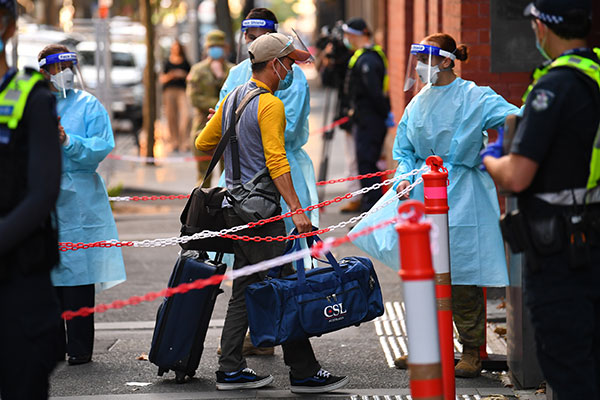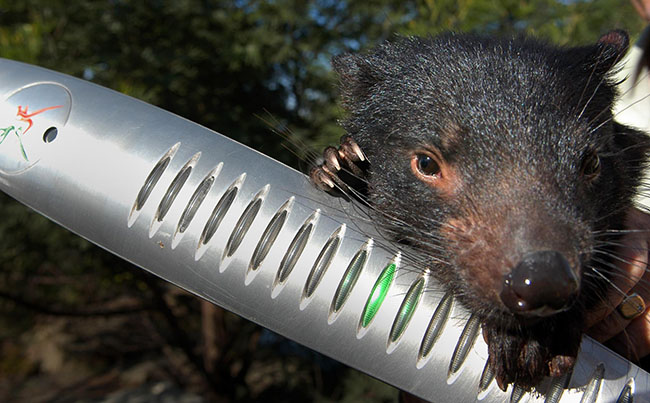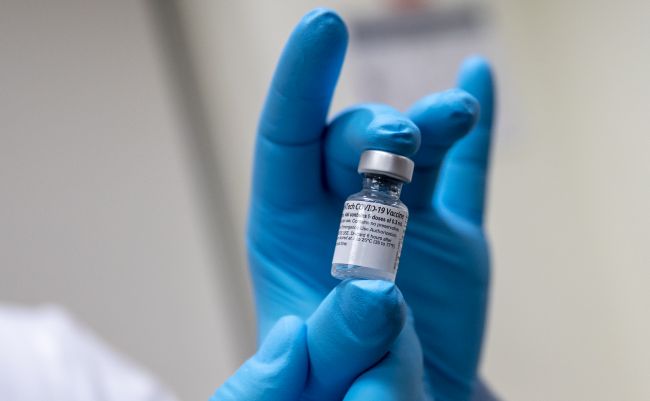Selected
- Details
- Written by Grant Broadcasters
- Category: Selected
- Hits: 117

Victoria's COVID-19 quarantine hotels will close within weeks as a purpose-built quarantine centre at Mickleham begins operations.
The state's quarantine agency CQV says medi-hotels to quarantine sick people will cease operations by the end of this month and hotels will not be used at all by the end of March.
More than 70,000 people have undergone quarantine in the hotel system since December 2020, enabling travellers to enter Victoria from interstate and overseas without spreading the coronavirus.
But leaks from the hotels sparked the state's second wave of coronavirus in 2020, which resulted in more than 18,000 new infections and 800 deaths.
Minister for Police Lisa Neville said the hotels were built for tourists, not quarantine.
"A purpose-built quarantine facility ensures we have the resources we need to see through the coronavirus pandemic and any pandemics in the future," she said in a statement.
The new Mickleham facility is the first of its kind in Australia to be built since the start of the pandemic, and will open 250 beds later this month, scaling up operations until the end of April.
The site, which will initially have 500 beds, has been built with federal government money but will be operated by state authorities.
It will house unvaccinated arrivals, people who test positive but can't isolate at home, and could also be used as emergency accommodation for natural disasters such as bushfires.
CQV has begun onsite training and orientation for 500 staff, with hundreds transitioning across from the hotel system.
The program included some of Melbourne's biggest hotels, including the Mantra Tullamarine, Four Points Hotel, Holiday Inn Airport, Novotel South Wharf and Intercontinental Hotel, Novotel on Collins and the Stamford Plaza.
© AAP 2022
Photo: A return traveller (centre) exits a Skybus upon arriving to the Intercontinental quarantine hotel in Melbourne (AAP Image/James Ross).
- Details
- Written by Grant Broadcasters
- Category: Selected
- Hits: 113

'Rascal' the Tasmanian Devil gets up close and personal with Queen's baton in 2006, as part of the Melbourne 2006 Commonwealth Games Queen's Baton Relay (AAP Image/prpix.com.au)
Tasmania has launched an audacious bid to host or co-host the 2026 Commonwealth Games, but some have labelled the move pointless.
Liberal Premier Peter Gutwein has written to Commonwealth Games Australia chief executive Craig Phillips and formally requested the island state be considered as a host for the sporting event.
Tasmania recently hosted the fifth men's Ashes cricket Test and was given two elimination AFL finals last season due to mainland COVID-19 restrictions.
"Our government is committed to delivering more elite sporting content for Tasmanians to enjoy," state Minister for Sport Jane Howlett said in a statement on Thursday.
"And, importantly, provide pathways for local sports men, women and children.
"We are confident that we can work collaboratively with Commonwealth Games Australia on the opportunities Tasmania presents as either a host or co-host of the 2026 Commonwealth Games."
The 2022 games will be held in Birmingham. The English city was originally scheduled to host the event in 2026 but it was brought forward when Durban in South Africa was stripped of hosting rights.
Ms Howlett said Tasmania has "clearly demonstrated" an ability to deliver elite sporting content.
The island state is hosting nine men's Twenty20 World Cup matches later this year.
The Labor opposition, however, is not on board.
"This is a pointless plan with absolutely no ability to deliver, and any money spent on a bid would be money wasted," MP Shane Broad said.
"Peter Gutwein, in writing to the Commonwealth Games CEO, has not even thought through the most basic details like where would we accommodate thousands of athletes and spectators?
"Where could he possibly hold an opening and closing ceremony of any size?"
Mr Gutwein has pushed hard in recent years for Tasmania's inclusion in the AFL but concerns have been raised about the state's smaller facilities.
Blundstone Arena in Hobart has a capacity of 19,500, while University of Tasmania Stadium in Launceston in the state's north can hold up to roughly 20,000 people.
© AAP 2022
- Details
- Written by Grant Broadcasters
- Category: Selected
- Hits: 125

Unvaccinated players could cause the NRL a mid-season conundrum as their medical exemptions potentially expire.
Those who have obtained temporary exemption from being vaccinated against COVID-19 will be forced to miss matches later in the year unless they get the jab.
It could lead to a tricky situation for the likes of North Queensland captain Jason Taumalolo and Melbourne prop Nelson Asofa-Solomona, whose vaccination statuses remain unknown.
The league hasn't mandated vaccination like the AFL but state rules require players to be double-jabbed to enter Queensland and Victorian stadiums.
Exemptions can be sought for reasons including a medical contraindication or a COVID-19 infection, which allows vaccination to be deferred by four months.
Taumalolo and Asofa-Solomona have been cleared to start the season but could be sidelined down the track if it turns out they obtained exemptions due to contracting COVID-19.
While the vast majority of NRL players are immunised, a handful remain hesitant.
Canberra forward Joe Tapine told The Sydney Morning Herald this week that he's yet to be jabbed, citing "reactions to past vaccinations", and had not received an exemption.
Tapine can currently play home matches in the nation's capital and away games against NSW-based clubs but will have to stay behind when the Raiders go to Queensland or Melbourne.
Vaccinated players, meanwhile, are now enjoying more relaxed protocols allowing them to attend events like birthday parties, weddings and funerals without permission.
They can also freely attend restaurants, cafes and bars, but groups of three or more players and/or staff from the same club cannot congregate together in indoor settings.
"We certainly don't want the players living in bubbles any longer, just like the community," NRL CEO Andrew Abdo said.
"We have to think about continuity differently. The rapid antigen testing is critical and that's happening every day."
The NRL is continuing to promote vaccination amongst the public. A pop-up booster shot clinic will be open at CommBank Stadium from 4-8pm on Saturday for the All Stars games.
"The majority of NSW is vaccinated and there's a strong case for all of us to get boosted because we know that it's safe," Abdo said.
Abdo expects more than 25,000 fans to attend as live rugby league returns to Sydney for the first time since last July, when a COVID-19 outbreak prompted the NRL's relocation to Queensland.
© AAP 2022
Image: U.S. Secretary of Defense, CC BY 2.0 <https://creativecommons.org/licenses/by/2.0>, via Wikimedia Commons
- Details
- Written by Grant Broadcasters
- Category: Selected
- Hits: 129

Victoria's climate change damage bill could top $150 billion by 2050, according to a wide-ranging state government plan to climate change-proof the state.
The estimate is based on emissions continuing to grow at recent rates without any adaptation measures and does not fully account for the cost of floods and bushfires, pollution and loss of biodiversity.
Even so, by 2100, the cost of the impact is likely to be about $1 trillion.
The state's plan, Building Victoria's Climate Resilience, sets out 127 steps to deal with these impacts across seven areas, including the built environment, education and training, health and human services, natural environment, primary production, transport and the water cycle.
Housing and other infrastructure such as parks and sports fields will need to be climate-proofed, water supply will also have to be secured, drainage systems upgraded to deal with floods, and the state's transport infrastructure will also need to withstand more extreme weather.
Environment Victoria's Greg Foyster told AAP climate change would have a huge impact on Victorians' way of life.
"We definitely are very vulnerable to climate impacts, more than many other countries, and we need to do everything we can to cut emissions as fast as possible," he said.
He welcomed the plan, noting the measures are simultaneously designed to further cut emissions, but warned the public has little awareness of climate impact on one of the areas of key focus - food production.
"Once people are aware there could be problems with food production due to climate change it very quickly becomes a top concern," Mr Foyster said.
The agricultural sector was the fourth-largest emitter in the state in 2018, while at the same time farmers in the Wimmera and southern Mallee are facing extreme weather and less rainfall, according to the report.
The region is responsible for much of the state's fruit, nut and grain production.
Victoria is already feeling the effects of global warming, with an increase in average temperatures of 1.2 degrees since 1910, reduced average rainfall and increased fire danger.
According to the government's plan, if global emission continue to increase, there is worse to come.
It states by 2050 Victorians will experience an average annual temperature increase of up to 2.4 degrees, double the number of very hot days, longer fire seasons, more intense downpours, and less rain during winter.
The Victorian government has set a target to halve emissions by 2030 and has allocated just under $2 billion to climate change initiatives during the past two years.
© AAP 2022
Image by Alistair McLellan from Pixabay
Page 85 of 191